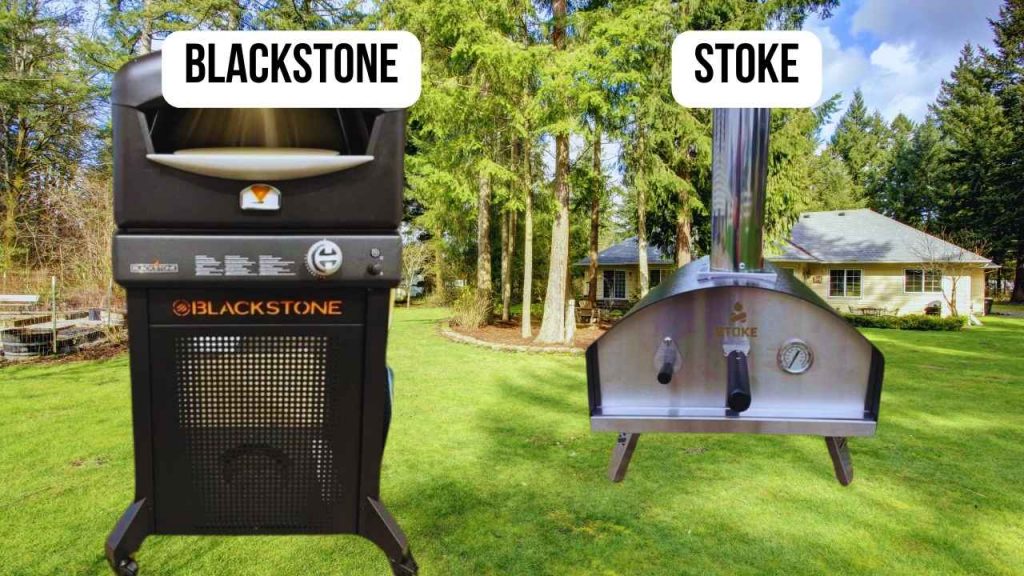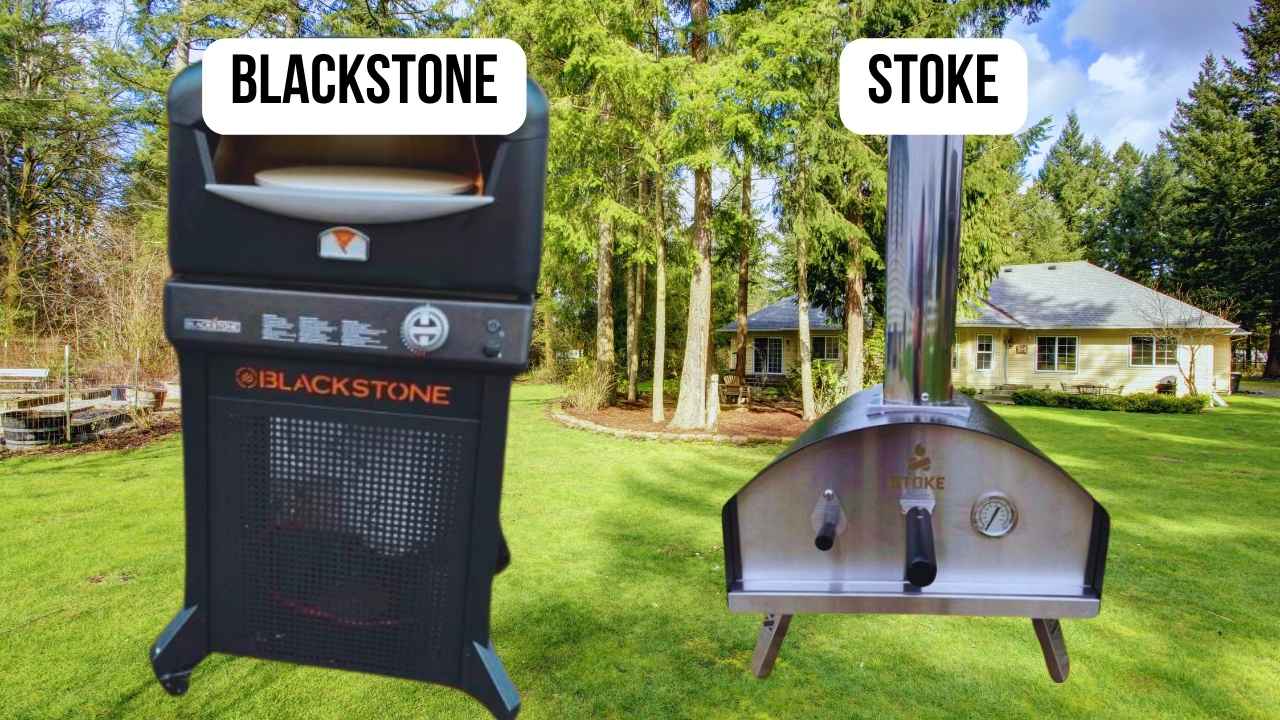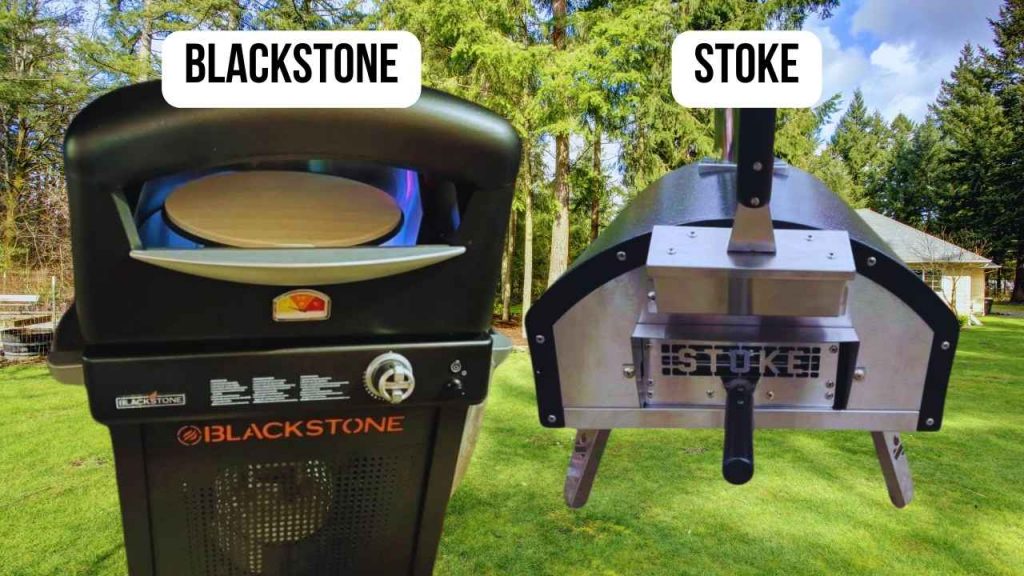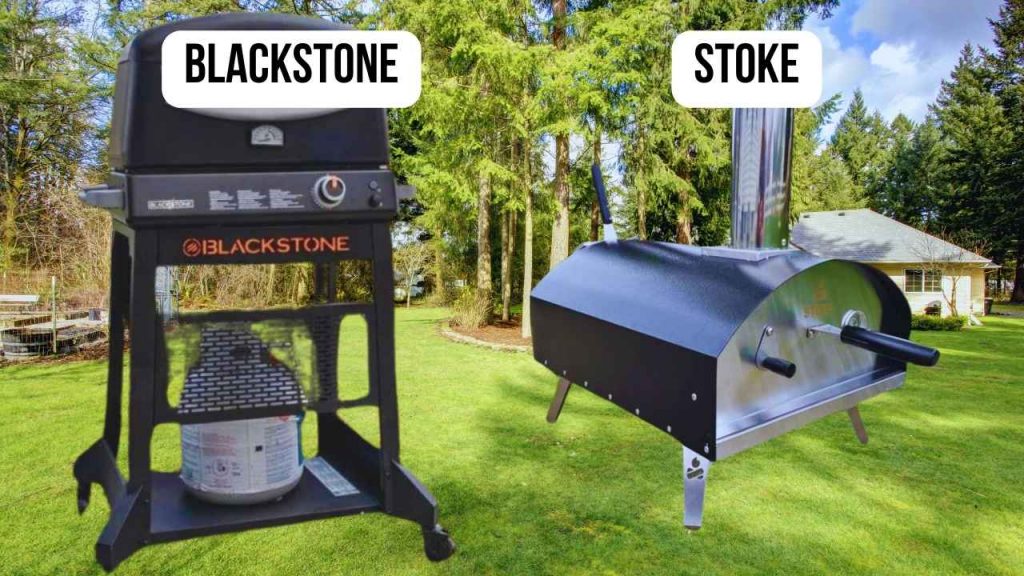As a restaurant chef with over 10 years of experience at Dequte Restaurant LironBoylston, I’ve worked with a wide range of pizza ovens in both professional and home settings. In this article, I’m comparing two ovens I’ve used side-by-side in my kitchen: the Blackstone Pizza Oven and the Stoke Pizza Oven. I tested them across several key categories: quality and materials, temperature control, shape, first-time usage impressions, power source, size, ease of cleaning, and I also conducted a real cooking test to see how fast and how well each oven handles a classic Margherita pizza. If you’re curious about my full pizza oven testing methodology, feel free to check out the separate article I’ve written for that.
The Blackstone Pizza Oven is a propane-powered workhorse known for its rotating stone, high BTU output, and fast, even cooking. The Stoke Pizza Oven, on the other hand, offers a sleek design and comes in both gas and wood-fired options, aiming to balance performance and portability for backyard pizza lovers.
I’ve put the Blackstone Pizza Oven and the Stoke Pizza Oven to the test, and this article covers the detailed comparison.
While not in the TOP-5 pizza ovens, these pizza ovens still have a lot going for them.
Lastly, just a quick note—this article includes referral links. If you choose to buy one of the ovens through those links, I’ll earn a small commission at no extra cost to you, which helps keep this blog running and allows me to keep testing more gear like this.
Blackstone VS Stoke: Quality and Materials
| The Blackstone Pizza Oven features high-end stainless steel construction, a durable cast iron rotating tray, and solid insulation. It feels built for long-term, high-heat use. |
The Stoke Pizza Oven is well-built with sturdy materials, but not quite on the level of premium ovens. It should hold up well under casual or moderate use.
|
Blackstone VS Stoke: Temperature Control
| The Blackstone Pizza Oven reaches over 900°F in just 10 minutes, offering excellent temperature consistency and fast recovery between bakes. |
The Stoke Oven claims 900°F but in testing only reached around 700°F. Weather can affect its heat-up time and max temp more noticeably.
|
Blackstone VS Stoke: Shape
| The Blackstone Pizza Oven has a smart design with a rear burner and rotating stone, which removes the need for manual pizza turning and allows for even cooking. |
The Stoke Pizza Oven has a traditional shape, but a thick wall between the flame and stone limits heat flow, making it harder to achieve high, even temps.
|
Blackstone VS Stoke: First-Time Usage Impressions
| With the Blackstone Pizza Oven, lighting and learning to use it is simple after a quick setup. The rotating tray simplifies the cooking process, even for beginners. |
The Stoke Oven is easy to set up and operate, but in testing it struggled to fully cook the bottom crust of the pizza evenly on the first try.
|
Blackstone VS Stoke: Power Source
| The Blackstone Pizza Oven uses a high-pressure propane burner (60,000 BTUs), offering reliable, powerful heat with minimal effort. |
The Stoke Oven is available in wood-fired and gas models. I used the wood-fired version, which adds flavor but requires more attention and effort to manage.
|
Blackstone VS Stoke: Size
| The Blackstone Pizza Oven is large and sturdy—ideal for semi-permanent outdoor setups. It’s not very portable, but great for heavy, repeated use. |
The Stoke Pizza Oven is compact and lightweight (just over 40 lbs), making it ideal for those with limited space or who want portability.
|
Blackstone VS Stoke: Ease of Cleaning
| The Blackstone Pizza Oven is easy to clean thanks to its accessible build and removable pizza stone. Maintenance is low-effort. |
The Stoke Oven also scores well for cleaning, with components that are easy to disassemble and maintain once cooled down.
|
Pizza Cooking Test

For this comparison, I used the same dough recipe and ingredients to prepare a classic Margherita pizza in both ovens under similar outdoor conditions.
The Blackstone Pizza Oven preheated incredibly fast, reaching over 900°F in just about 10 minutes. Once I launched the pizza onto the rotating stone, it cooked evenly in just 70 seconds. The crust came out beautifully puffed with light char marks underneath, and the cheese was perfectly melted with just the right amount of bubbling. The bottom was crisp without being burnt, and the flavor was excellent—exactly what I expect from a professional-grade oven.
On the other hand, the Stoke Wood Fired Pizza Oven took around 20–25 minutes to reach its peak temperature, which during testing hovered around 700°F. The Margherita pizza cooked in about 3 minutes, with the top cooking faster than the bottom. The cheese was nicely melted and the top crust had some nice coloring, but the base wasn’t as crispy or caramelized as I’d hoped. The flavor was still enjoyable, especially with the added smokiness from the wood fire, but it needed a bit more balance in terms of heat distribution.
Overall, both ovens delivered tasty results, but the Blackstone had the edge in speed, evenness, and crust quality.
How We Tested

To make this a fair and practical comparison between the Blackstone Pizza Oven and the Stoke Wood Fired Pizza Oven, I used the same dough batch, same toppings, and prepared the exact same Margherita pizza recipe for each oven. Both ovens were tested outdoors, under similar weather conditions, with no wind interference and at around the same ambient temperature.
Before cooking, I preheated each oven according to manufacturer recommendations, and I used an infrared thermometer to check the stone temperature before launching the pizza. With the Blackstone, I allowed the oven to reach over 900°F, and with the Stoke, I waited until it stabilized around 700°F.
I paid attention not only to how long the ovens took to preheat and cook, but also how evenly they cooked the top and bottom of the pizza. I also noted how much manual effort was needed during the process—like turning the pizza or adjusting the flame—and how each oven handled back-to-back cooking.
Lastly, I tasted the final product from each oven and evaluated it based on crust texture, flavor, cheese melt, and overall doneness. This hands-on, real-world cooking test was done to reflect how the ovens would perform for actual users, not just specs on paper.
Final Thoughts

At the end of the day, both the Blackstone Pizza Oven and the Stoke Wood Fired Pizza Oven have their strengths. If you’re looking for speed, power, and convenience—especially with a rotating stone that takes the guesswork out of cooking—Blackstone is hard to beat. It’s an excellent choice for anyone who wants professional-quality results with minimal effort.
On the other hand, the Stoke Pizza Oven is a solid pick for casual backyard pizza nights, especially if portability and wood-fired flavor are your priorities. It’s compact, stylish, and easy to clean, even if it takes a bit longer to heat and requires more attention during cooking.
Ultimately, it’s your choice based on your budget, cooking style, and space. But if you do decide to grab one of these ovens, I’d greatly appreciate you using my referral links—I earn a small commission at no extra cost to you, which helps keep this blog running and supports more pizza oven testing in the future.
Thanks for reading—and happy pizza-making!
Don’t skip the list of today’s best pizza ovens.



